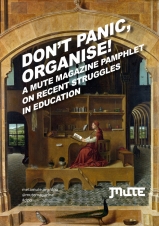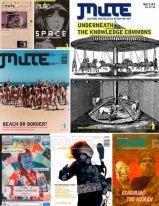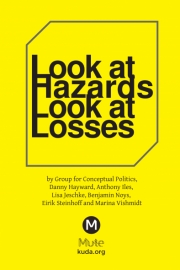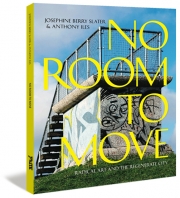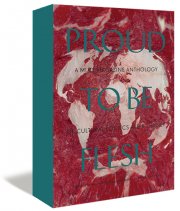Outside In: Organising NODE.London
NODE.London a.k.a. NodeL – Season of Media Arts London. Whatever you called it, it was and is a year of activities around art, social organisation and media inaugurated the World Summit on Free Information Infrastructures at Limehouse Town Hall and Open Congress at Tate Britain in late 2005.
It hasn't been easy to find reviewers with the panoptic gaze necessary to survey this ambitious series of events and exhibitions and talks (and a book!). So, in the spirit of openness and networked self-reflexivity, we asked one of NodeL's volunteer organisers, Lauren Wright, for her embedded perspective
The first time I attended a NODE.London meeting, early last November, I had little idea what to expect, and having just moved to London I didn't know a soul. The first email I received about NODE.London, via my ‘network’ of doctoral students, was cryptic though enticing. It began:
NODE.London [Networked, Open, Distributed, Events: London] is a growing network committed to building on the shared infrastructure, sustainability and visibility of media arts practice in London.
The announcement continued, inviting any artist, curator, or otherwise who wanted to present something during the upcoming season to register their interest and receive support from ‘Seed Nodes’ – ‘London-wide hubs of activity supporting NODE.London in March’. What exactly any of this meant, I wasn't sure, but it sounded to me too good to be true. I emailed the Project Coordinator to find out just how a new-to-the-scene curator like me could contribute; he told me there was no fixed way for curators to become involved, pointed me to http://nodel.org and a wiki for an organisation called SMAL (Season of Media Arts London), which I later learned was NODE.London's original name, and encouraged me to come along to a meeting to learn more.
A bit bemused but not discouraged, I went along to the meeting at London South Bank University. Before the meeting started, the Project Coordinator and a peppy pink-and-purple clad ‘voluntary organiser’ gave me and a few other newcomers a brief introduction to the organisation. They explained that NODE.London was an infrastructure for the promotion of media arts rather than a curated festival; it sought to build networks and organise a season for March 2006 on a principle of openness both toward the projects presented, which would not be centrally curated or commissioned, and toward those involved at the organisational level. This way of working, they said, fit with the content of the season and the growing tendency among media artists to examine networks and distribution systems and to challenge hierarchies. They explained that voluntary organisers, or VOs, who became involved simply by expressing their interest and offering their help, ran the whole thing. Being a VO sounded exciting and dynamic: you could help anywhere you felt you were able, you would work with all sorts of different people, and you might just get called to a last-minute meeting in a park.
For the rest of the meeting, artists and others presented projects in development for the season. One artist screened a wonderful film from a series on geography and ‘deep mapping’ about schizophrenics' delusions around the bizarre stainless steel box-shaped monument (to Michael Faraday) in the middle of the Elephant and Castle roundabout – appropriately just around the corner. Someone else presented a project that would encourage dialogue amongst community members by allowing them to sit suspended in a ‘peace pod’ or around a mobile chat-show table, and then later listen to their conversations which would be archived onto a website. The diversity of projects was fascinating, and though I wasn't sure I quite ‘got’ NODE.London, I felt encouraged to keep trying to figure it out.
 Image: Andy Deck, Glyphiti, collaborative online graffiti project, 2001-Ongoing
Image: Andy Deck, Glyphiti, collaborative online graffiti project, 2001-Ongoing
A few weeks later, I went to a VO meeting at Space studios in Hackney; the people there were artists, curators, researchers, activists, or any and all of the above, and some came from prominent media arts organisations, such as the net art collectives low-fi and Furtherfield, while others were from large institutions such as Tate Modern. Watching the discussion unfold, from the still relatively detached position of an outsider, was instructive. All of the strengths and pitfalls of NODE.London's unique approach were there in the room. The meeting consisted primarily of a discussion on the function or dysfunction of subgroups, smaller clusters of VOs focused around particular aspects of the organisational process. Subgroups, it seemed, functioned with varying degrees of effectiveness: some never once met, some disintegrated, one was near self-destruction, conversely some worked well and got things done. There was conversation about the online tools, which were central to NODE.London's aim of facilitating improved contact and communication among media arts practitioners, and which would ideally be the organisation's primary legacy after March. There was also talk about potential difficulties facing NODE.London's public relations campaign: how to make NODE.London understandable to the press, and to the public at large, for that matter? After all, the characteristics of media art that NODE.London was established to embody – openness, malleability, collaboration, critical praxis, etc. – are precisely those characteristics that make media art difficult for the art establishment to swallow. Furthermore, NODE.London was, in a way, reinventing itself all the time. NODE.London's organisational structure, precisely what it meant to ‘organise’, those involved in the process of organising, the means of distribution for NODE.London's financial resources, and even its definition of ‘media arts’ were under constant revision. It was evident that it wouldn't be clear until it happened just what the season would be like, so how to convey a coherent identity which both those fully immersed in media arts as well as the completely uninitiated could comprehend and appreciate? The conversation lasted late, and by the time I got the night bus home, I felt full of all the tension, and also the vitality, inherent to the project. I wasn't sure the whole thing would work, but it would certainly be exciting to be involved.
It's been nearly a year now since that meeting, and my premonition was accurate. The March season came, exceeded some expectations, fell short of others, and went again. The season itself was incredibly rich in the range and scope if its projects: there were net art exhibitions, panel discussions, participatory community mapping projects, screenings of early computer-generated animation, a night-long interrogation of the usefulness of participatory organisations, complete with head-splitting sound effects and vegetable soup, and much more. It was clear that NODE.London had achieved something simply by providing a platform for such a wide range of activities to happen at once. To what extent, however, had it fulfilled its primary aims: developing the infrastructure for media arts in London, raising the visibility of media arts in London, and working in an open, cooperative and collaborative environment?
At the conclusion of the season, NODE.London conducted a thorough self-evaluation eval.nodel.org that sought to assess the success of the March season around these aims. The results were mixed, but optimistic. Certainly it seems that NODE.London has developed the infrastructure for media arts. Many practitioners and producers gained tremendously from the season, developing important new links with others, which have since led to new collaborations, partnerships, and a generally more vibrant media arts scene in London, especially from the perspective of those involved in it. The online tools at nodel.org, which acted as the primary nexus of information during the season, are still up and running. Though they stand now as a record of the season rather than as an active platform for communication, largely due to lack of funds, there are plans to develop them and media arts communities in other cities are interested in using them to facilitate their own seasons.
 Image: Christian Nold, Bio Mapping, 2004-Ongoing
Image: Christian Nold, Bio Mapping, 2004-Ongoing
NODE.London's primary weakness was in achieving its second aim, raising the visibility of media arts in London. As predicted, the mainstream press had difficulty grasping the project, saying there was too much going on and nothing prioritised enough for them to work with. There was, however, lots of talk online and in other cities, especially in mainland Europe. The season did bring new audiences to media art, but not in the numbers many had hoped for. This was largely due to a lack of consistent message and marketing materials, like the catalogue and website, which were not accessible enough to the general public. While there is an argument to be made for NODE.London acting as a vehicle for examining and extending theory and critical discourse around media arts in practice, given the aims of the first season, it seems NODE.London should learn to speak more clearly about what both the organisation and the practitioners working within it are trying to achieve.
The third aim, a commitment to working in an open and collaborative environment, perhaps posed the greatest challenge, though it also lent the project its energy. The strategy of openness meant that anyone who was interested in becoming involved in the season effectively could be; anyone could originate a project for the season so long as it could be described as media arts, and likewise anyone with the spare time and energy could become a VO. As decisions were made by consensus, anyone, new to NODE.London or not, might play a significant, indeed an agenda-setting, role should they wish. It was this aspect of the season and the organisation as a whole that primarily distinguished it from other media arts festivals. It is also what makes NODE.London well suited to its content, an organisation which exemplifies ‘the ethos of forms of open cultural production and debates about free infrastructure that have always inspired media artists and media art.’ http://smal.omweb.org/modules/wakka/NodelinaNutShell. As a ‘speculative’ approach to organising a media arts festival, NODE.London's open structure was very successful, allowing many previously unconnected people to come together. However, it also posed significant problems. VOs drifted in and out as their schedules allowed, and it was very difficult to hold people accountable for their promised contributions. The constant need for consensus made decision-making slow, undermined the project's dynamism, and occasionally undermined the means to support both organisers and participants. At times, openness teetered on the edge of unleashing Jo Freeman's ‘Tyranny of Structurelessness’ which it was explicitly conceived to avoid.
Now, more than six months on from NODE.London's first season of media arts, the organisation is preparing for the future. In early July, NODE.London held a visioning and networking event, NODE.London – Shape the Next Phase, at the ICA. The aim was to bring in both new potential VOs and participants and to begin charting a course for the future. Since then, progress has been slow but steady. Last month, a new Organisational Development subgroup met to start hammering out NODE.London's new structure. Openness is still a major priority, but it must be an openness that supports not only NODE.London's content, but also its organisational learning and its participants. It also must be an openness that allows NODE.London to communicate with the art world and the public. It must hold participants accountable for their commitments to the organisation, and reward those who contribute. It should also be truly open to all, not just to those with enough free time and financial resources to be able to contribute huge amounts of energy voluntarily. If this means introducing things like strategic remuneration and subgroup leaders, which may seem anathema to openness, then so be it. For true openness is not just making NODE.London available to all, but also making everyone equally able to participate and really achieve something together.
Indeed this is what I find the most radical aspect of NODE.London, the fact that it does allow space for both subverting and capitalising on that which is perhaps the international art world's defining feature: its network. Most often this translates into nepotism and closure to those not already in the know, but in the case of NODE.London, you didn't have to be in with the in-crowd to participate in the season in a meaningful and rewarding way. I joined NODE.London very late in the game, I came without a major arts institution or other significant position within the scene to lend me kudos; all I had was my interest, skills, and willingness to contribute my time and energy to the project. Nonetheless, I was indeed one of a relatively small group of individuals who worked very hard in the months just before the season, and I continue to be closely involved in shaping the future of the organisation. It certainly was not easy gaining respect within the organisation from my much more prominently placed peers, but it happened eventually once I demonstrated what I could contribute. This, I think, is as it should be. NODE.London is likely to continue successfully if it is able to be open to interested and enthusiastic participants and also to hold them accountable for their commitment to the enterprise, and reward them accordingly. An observant outsider recently asked whether NODE.London was too open, if it could benefit from being a bit more prescriptive. Quite likely. I think many of the suggestions made recently, regarding compensation, restructuring, decision-making and accountability are absolutely the right path to continue along. And if these modifications receive the support of the ever-changing group of individuals who will define it, NODE.London will continue, mutatis mutandis, as an exemplar of a different, and constantly learning kind of media arts organisation worthy of emulation by NODEs elsewhere.
Lauren A Wright <laurenawright AT gmail.com> is an independent writer, curator, arts consultant, and researcher. She is currently working on a PhD at the London Consortium about spectatorship and media art in the expanded sense, focusing on temporality and critical approaches to curatorial practice. She is also a member of the media art platform Furtherfield
Mute Books Orders
For Mute Books distribution contact Anagram Books
contact@anagrambooks.com
For online purchases visit anagrambooks.com


